Designs Worth Discovering: Rookwood Pottery Tile
http://decor-ideas.org 03/07/2014 07:22 Decor Ideas
Rookwood pottery is part of my design psyche. I remember going to the Rookwood restaurant in Cincinnati when I was a little girl; we sat in a refurbished giant kiln, which sounds very creepy but was very cool to my little brother and me at the time. Every time I find a Rookwood vase in an antiques store, I get a thrill. I got the same thrill when I realized Rookwood tile was showing up in homes around Houzz.
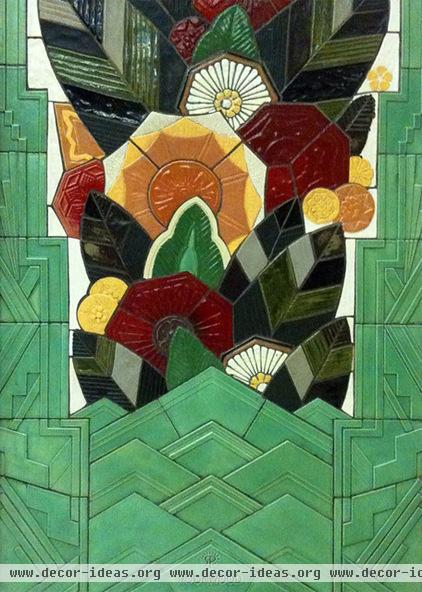
Inspired by the Japanese designs she saw at the centennial exhibition in Philadelphia in 1876, Maria Longworth Nichols was determined to bring that level of artistry to American ceramics. By 1880, with financial help from her father and a team of famous artists, talented art students and glaze technicians, she started Rookwood Pottery, the first female-run manufacturing endeavor in the United States.
In 1884 the company invented the first crystalline glaze, Tiger Eye. Five years later American ceramics grabbed international attention, winning the gold medal at the Paris Exposition Universelle in 1889. Nichols’ vision was instrumental to the American pottery movement, which was in full swing by the turn of the century.
Rookwood went out of business in 1967, but its story does not end there. A fervent collector, Art Townley, bought the company’s assets in 1982, including thousands of molds and secret glaze formulas.
In the meantime, the pieces became highly collectible and prized; the architectural tile and decorative pieces were particularly appreciated as a part of Cincinnati’s unique architectural history. In 2004 a Rookwood vase sold at auction for over $350,000.
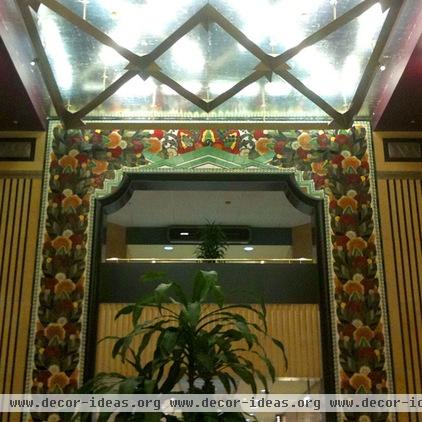
Also in 2004 Dr. Townley found like-minded investors, and together they restored the company in Cincinnati. Today the tiles are sought-after, particularly by those looking for authentic tile for Arts and Crafts (Craftsman) homes, as the principle at the very root of Craftsman style is placing a high value on hand-crafted artistic details.
Much of downtown Cincinnati was growing during the art deco era, and Rookwood provided plenty of locally manufactured detail. Carew Tower, shown here, is a high-rise complex in Cincinnati known for its French art deco style. Rookwood designs flank the east and west entrances.
Maya Drodz of VisuaLingual has documented much of the Rookwood splendor seen around Cincinnati and provided many of these photos.
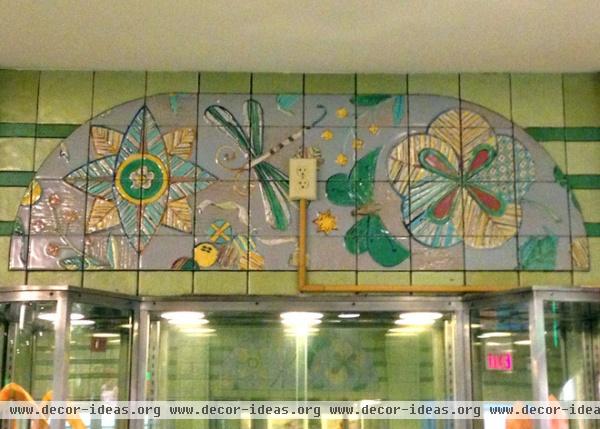
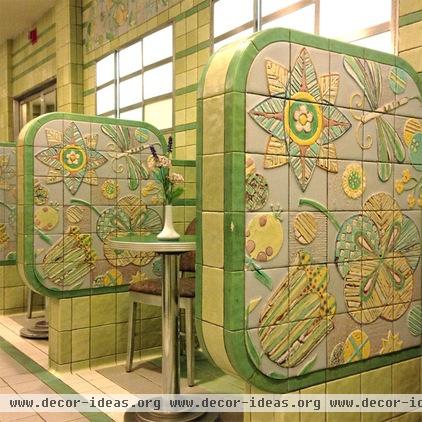
Cincinnati’s Union Terminal is one of the premiere examples of art deco architecture in the country. Its design intentionally included room for vast amounts of large-scale public art, such as the famous murals by Winold Reiss.
Union Terminal’s Tea Room (now an ice cream parlor) includes more whimsical Rookwood Pottery designs by William E. Hentschel. During World War II, the room served as a USO troops-in-transit lounge. This was one of the last projects installed before Rookwood Pottery declared bankruptcy.
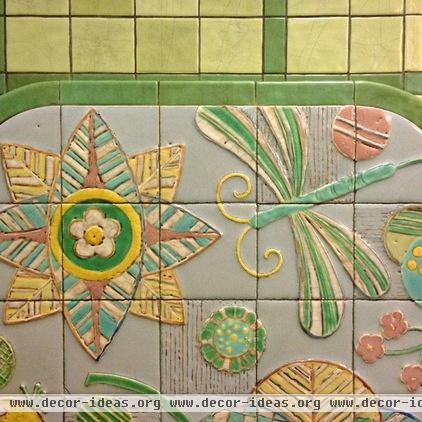
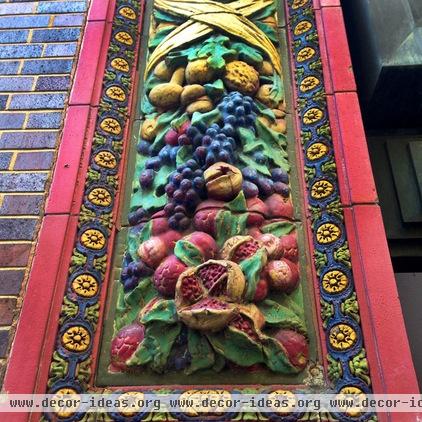
The Gidding-Jenny department store’s decorative, one-of-a-kind terra-cotta facade was completed in 1907. In 2003, after pieces began falling off, an extensive restoration saved it. Afterward, Cliff Radel of The Cincinnati Enquirer wrote, “The loss of the tiles with their garland-trimmed flowers, fruit and faces would have left an irreparable hole on Fourth Street’s smile.”
Not only weren’t they lost, but now this is the most beautiful architecture to ever announce the presence of a T.J.Maxx.
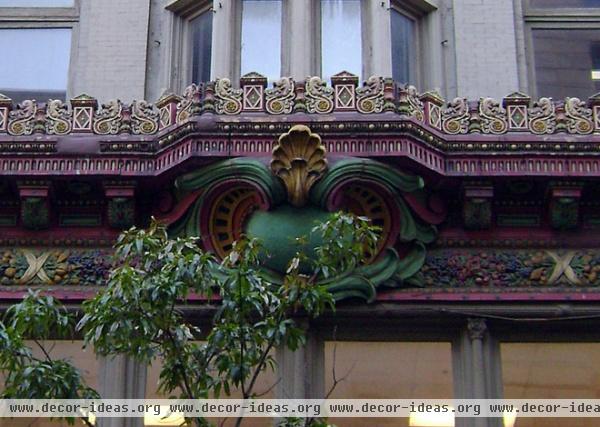

Rookwood’s creations certainly were not limited to the confines of its own city. This is an entrance to train tracks at Grand Central Terminal in New York City.
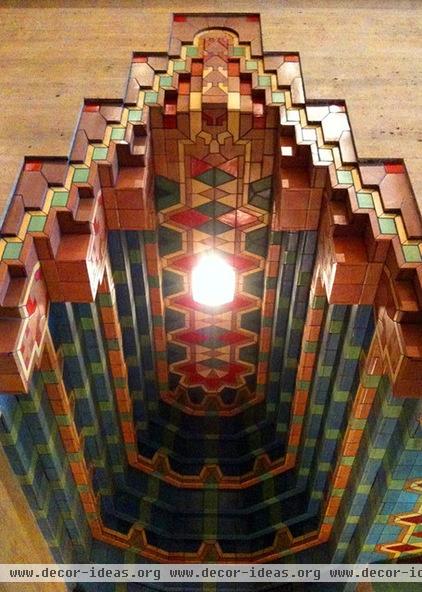
This dynamic Rookwood assemblage is in the Guardian Building, in Detroit.
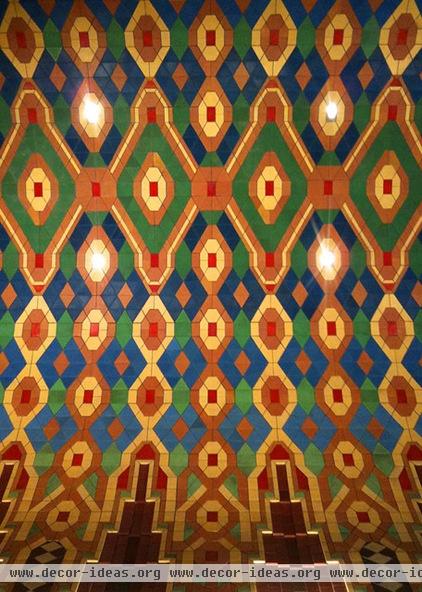
Note the stepped art deco architectural forms at the bottom of this close-up.
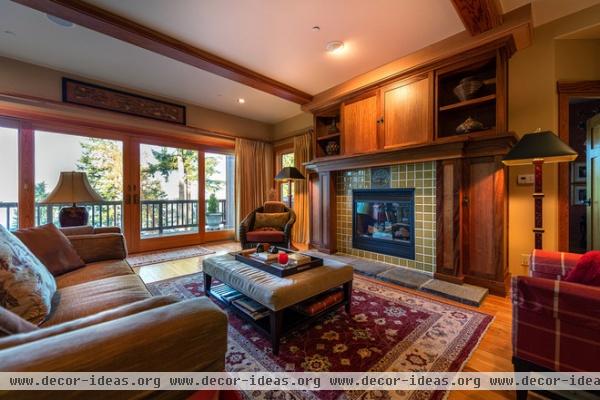
What’s so exciting is that Rookwood’s offerings are once again available for residential use. Many of the original designs are available and are still hand-glazed with their unique formulas. With Craftsman-style architecture so popular today, it’s no surprise that savvy designers are looking to Rookwood’s Arts and Crafts lines. The Heritage line, shown here, is based upon Rookwood’s original catalogs from 1912 to 1925.
Houzz pro Wren & Willow is a general contracting and interior design company. When the owners bought a 1917 building for their offices and showroom in Tacoma, Washington, they wanted to re-create an authentic 1900s look. “I researched and found that the Rookwood tile company has been in existence since the late 1800s and was founded by a woman, Maria Longworth Nichols,” says owner Laureen Skrivan. This inspired her to pick the tiles for the fireplaces in their building, including Eden Rosette and several of Rookwood’s bird designs.
Her choices have inspired clients. These folks, in Seattle, chose the tree-of-life pattern for their fireplace surround, and Wren & Willow designed the cabinetry and trim to show it off and enhance it.
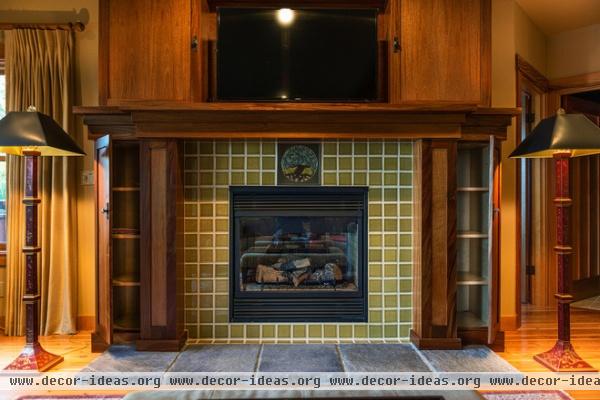
“Rookwood is so beautiful in person — everyone who comes through our showroom stops and gasps at both of our fireplaces,” Skrivan says. “It is true craftsmanship, and people with an educated eye understand the value of that.”
Skrivan also marvels that the company ensures that every piece that comes out of the kiln is perfect before shipping it out. Since she put Rookwood on display in her showroom, clients have ordered it for showers, fireplaces and backsplashes.
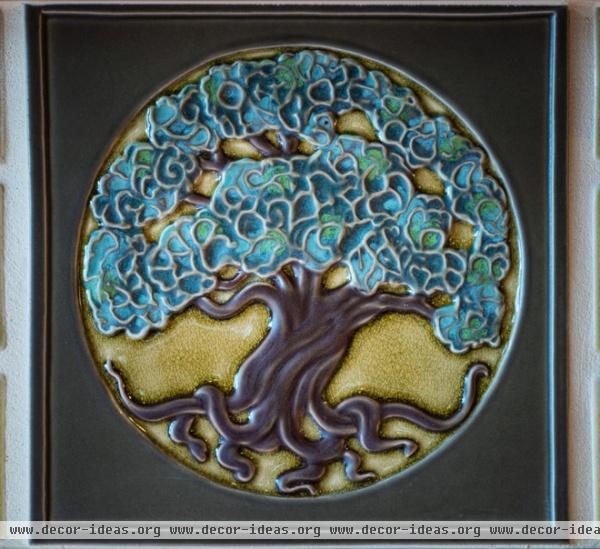
This tree-of-life tile serves as a focal point within the focal point in the Seattle Rookwood-tiled fireplace surround above.
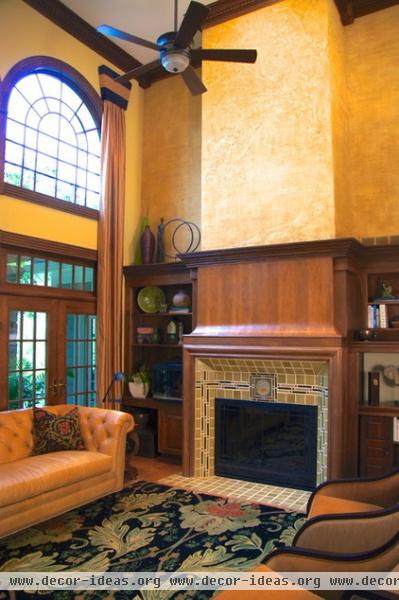
Here is the tree-of-life pattern in a different color palette.
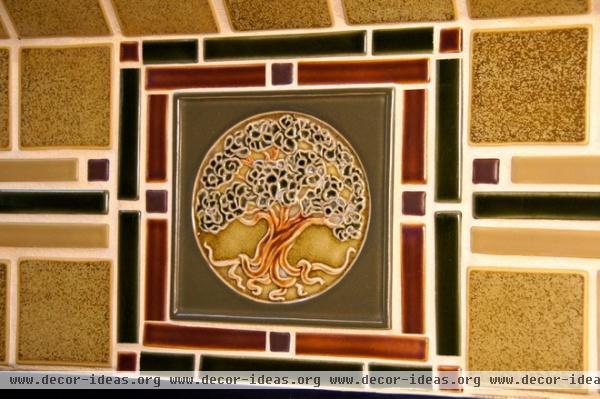
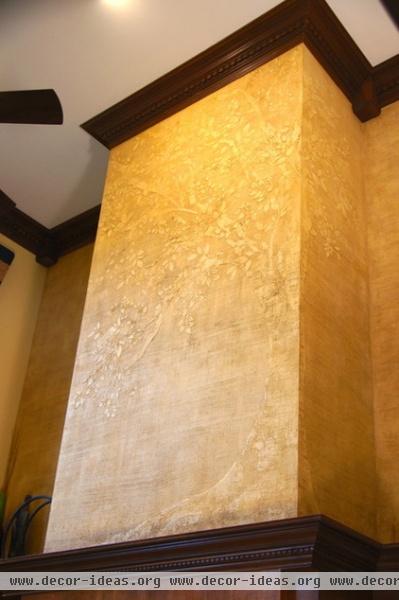
Overhead a subtle Japanese-inspired botanical design plays off the Rookwood tile. Because artisanal Japanese tile was Nichols’ earliest inspiration to start the company, this is a wonderful way to honor the history.
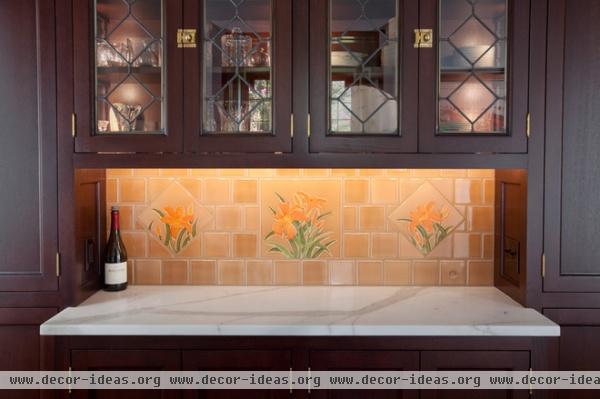
In this elegant Tudor-style home, you can just make out the Rookwood logo stamp on a tile near the bottom-right corner. Rookwood is also a very appropriate choice for Tudor-style homes, as they were popular in the United States during Rookwood’s heyday.

Rookwood also has many geometric, three-dimensional options to choose from. This pattern, Reverie, is from the Modern Classics Collection. The center piece of each circle is a separate tile; the oblong “peel” tile pieces fit in around it.
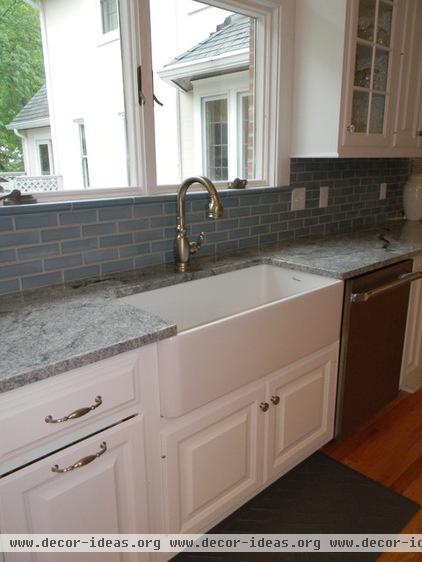
These homeowners are avid Rookwood collectors. New tiles from the company complement their Rookwood vase collection in the new display cabinets.

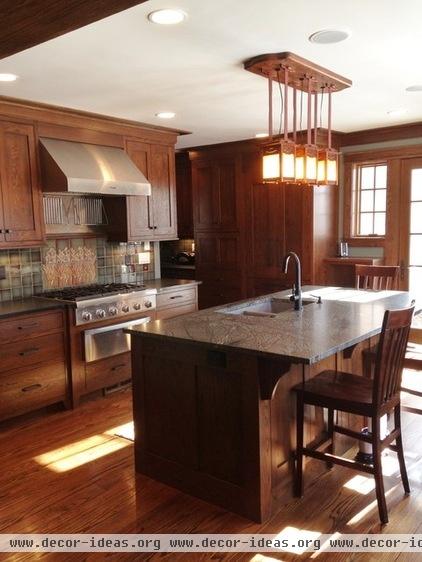
In this Craftsman kitchen, the Rousseau series adds fitting handmade detailing. Variations in color and the unique Rookwood glaze are just the right match for the beautiful wooden cabinets and copper pendant lights.
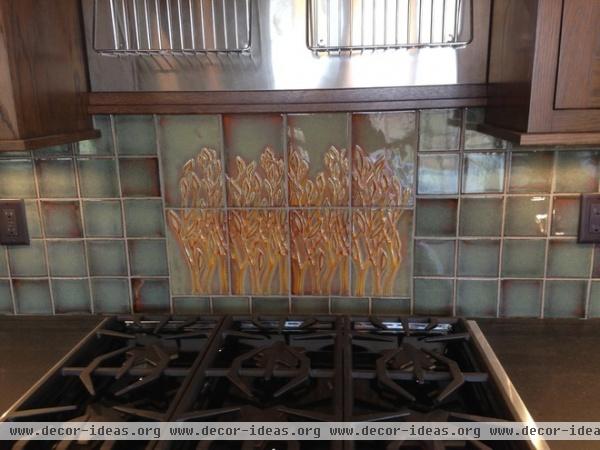
When Nichols was inspired to start Rookwood Pottery, American ceramics were looked down upon in the international community. In just a little over a decade, her company put American ceramics on the map. It’s wonderful to see Rookwood thriving again today.
Tell us: Do you have a Rookwood piece? We’d love to see a photo in the Comments.
Related Articles Recommended












